Celebrating History
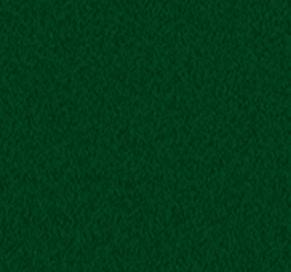










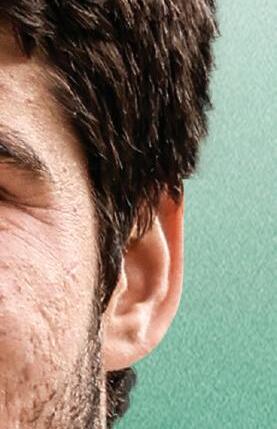


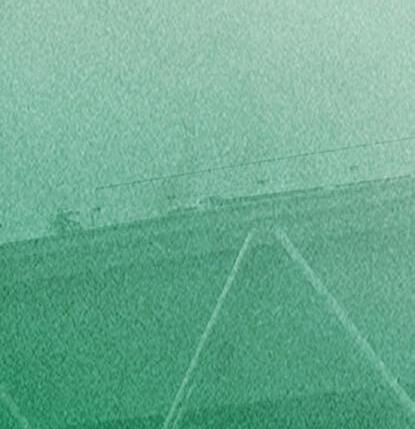




















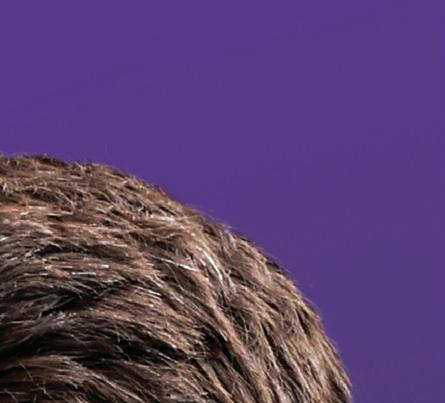
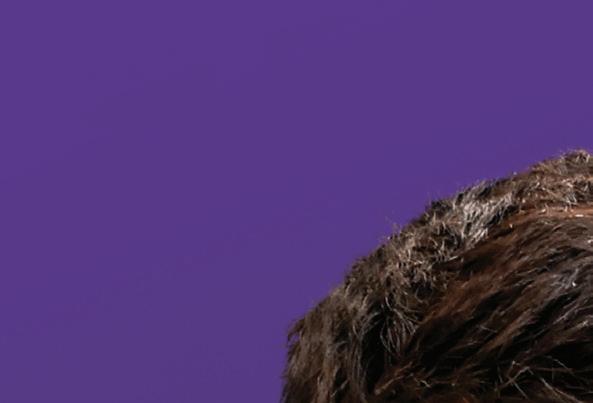



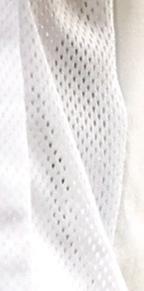


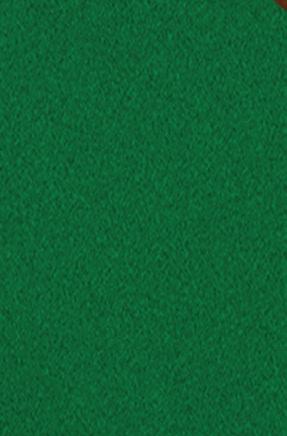

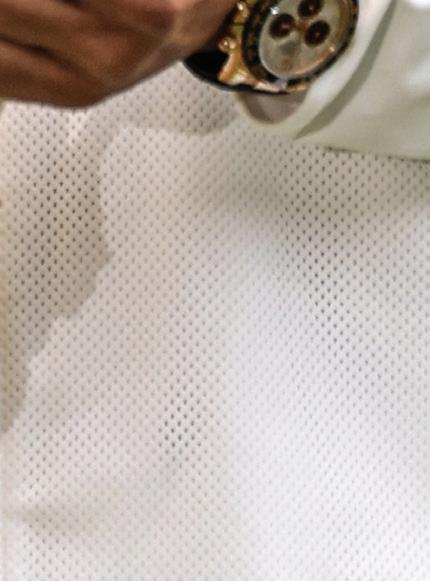











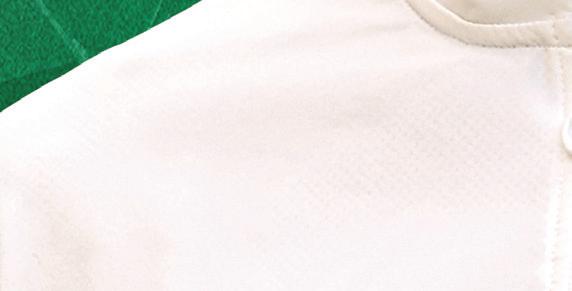
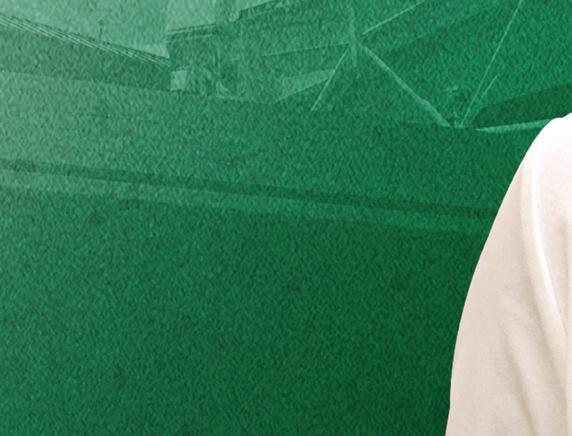
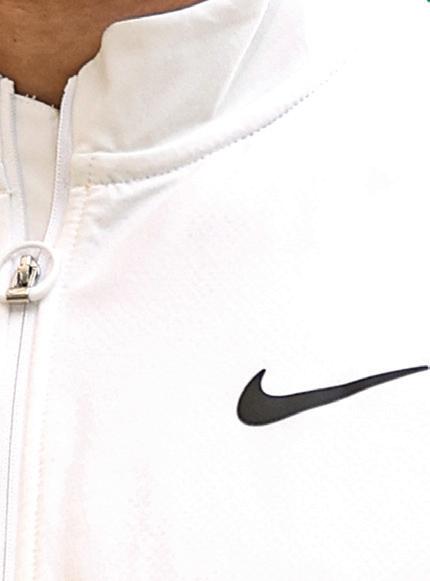






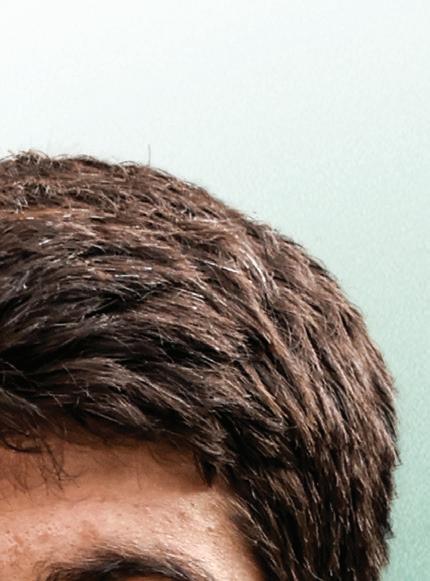






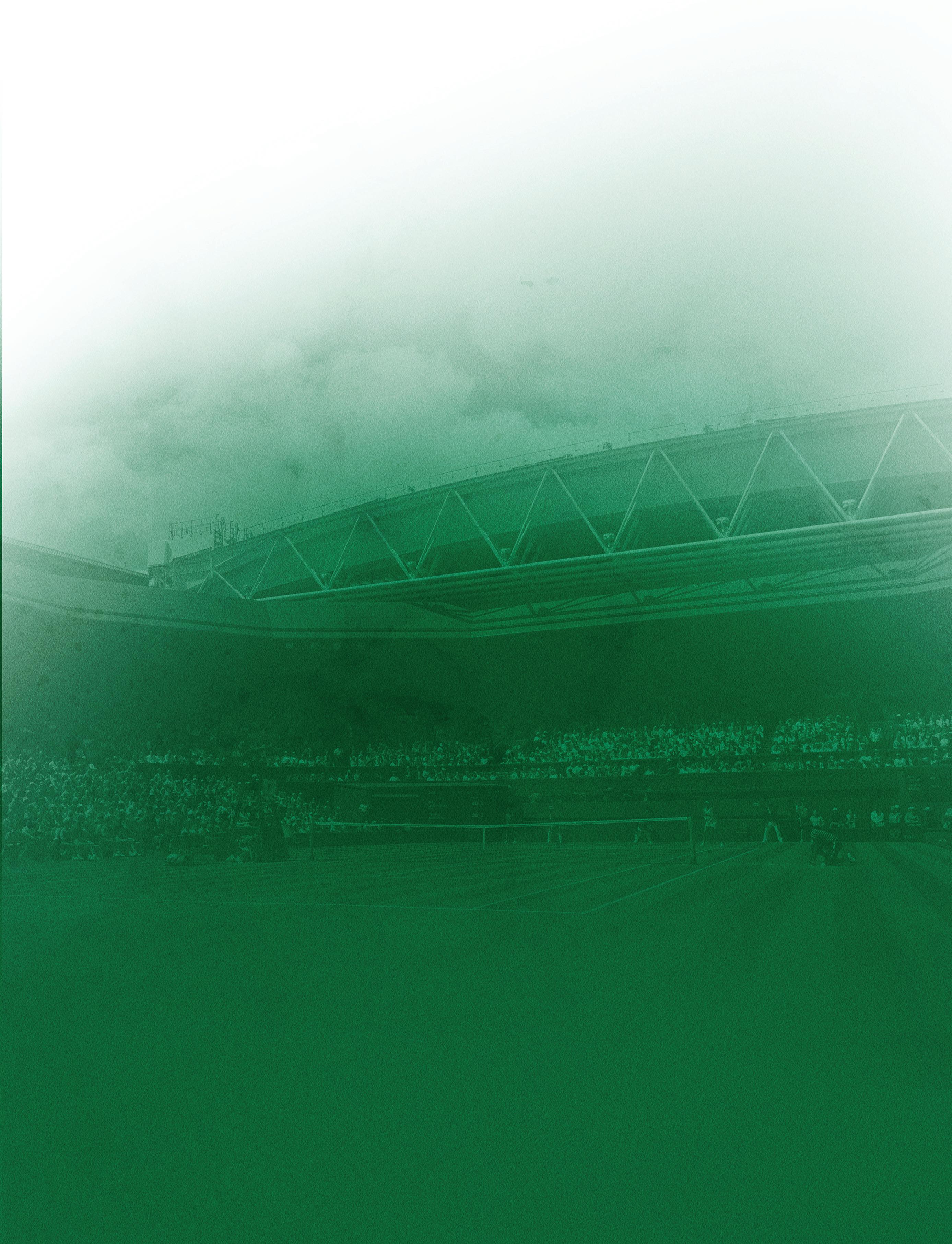
2023
CARLOS ALCARAZ DETHRONES DJOKOVIC MARKETA VONDROUSOVA UNSEEDED SUCCESS SUCCESS WIMBLEDON
MAJOR MILESTONE 50 YEARS OF ATP RANKINGS AUG / SEPT 2023
18 IMPOSSIBLE DREAM
From outside the top 40 and pre-tournament conversations, Marketa Vondrousova became the first unseeded woman to triumph at Wimbledon.
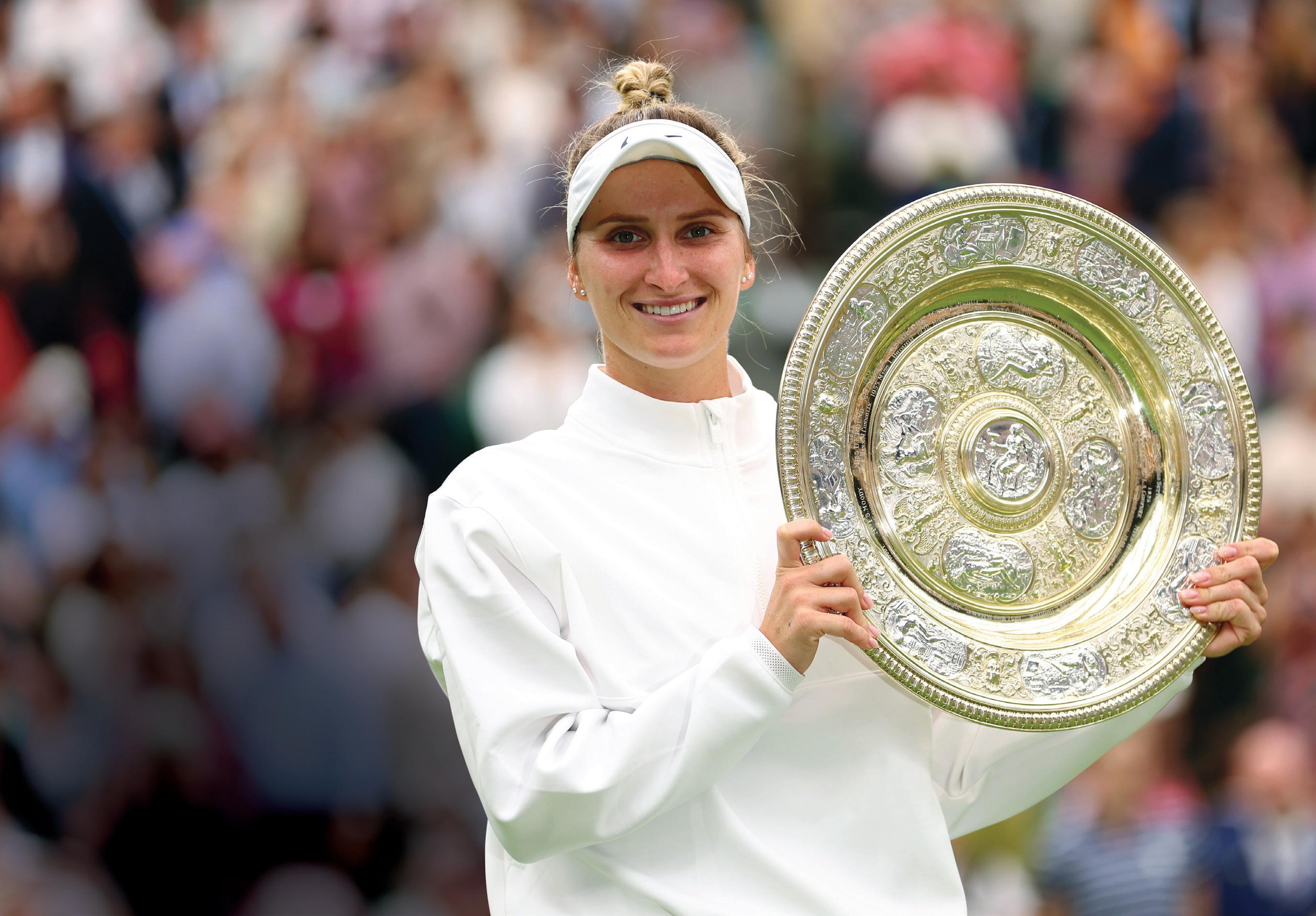
FEATURES
30 WRITING HIS OWN HISTORY
As Novak Djokovic builds on astonishing records, a deep respect for history and the opportunity to create his own is providing major motivation.

45 BRAVE BRAZILIAN
After years of struggles, Beatriz Haddad Maia is finally showing the world her capabilities and shining on the Grand Slam stage.
14 CARLOS JOINS THE GREATS
As a winner over Novak Djokovic in a classic Wimbledon men's final, Carlos Alcaraz underlined his status as a major force.
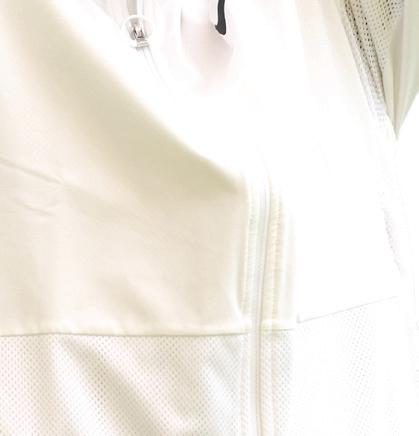

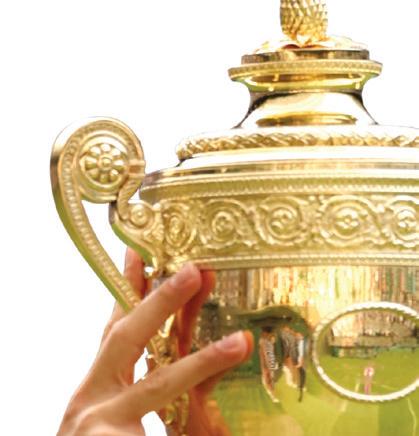
MANAGING EDITOR
Vivienne Christie
ASSOCIATE EDITOR

Leigh Rogers
DESIGN
Andrea Williamson
Mauro Cecchin
Daniel Frawley
Craig Holes
FOUNDING EDITOR
Alan Trengove
PHOTOGRAPHS
Getty Images
Tennis Australia

COVER PHOTO




































Getty Images
Australian Tennis Magazine is published by TENNIS AUSTRALIA LTD, Private Bag 6060, Richmond, Vic 3121.
Email: editor@tennismag.com.au









Distributed by Ovato
Printed in Australia by Ive
The views expressed in Australian Tennis Magazine are not necessarily those held by Tennis Australia. While the utmost care is taken in compiling the information contained in this publication, Tennis Australia is not responsible for any loss or injury occurring as a result of any omissions in either the editorial or advertising appearing herein.
4 AUSTRALIAN TENNIS MAGAZINE
contents AUGUST / SEPTEMBER 2023 VOL.48 NO.4
48 LOOKING BACK, POWERING FORWARD

Armed with a career-high ranking and heartening perspective, Christopher Eubanks is now embracing a brighter future in the sport.
52 THE GREAT DANE DISRUPTER
Brilliant yet brash, Holger Rune can be a divisive personality; but as he amasses feats not seen on the men’s tour for more than fi ve decades, he’s making his presence felt.
58 REFLECTIONS FROM A LIFE IN TENNIS



One of the first Australian players to dominate on clay at the highest level, Lesley Bowrey has remained closely connected to tennis long since her glittering playing days.
70 POSTCARDS FROM ELLEN PEREZ
Australian Ellen Perez shares an insight into her travel adventures and season highlights, which includes a top-10 debut in doubles.
50 YEARS OF RANKINGS
Impactful, controversial, history-making and heartbreaking, computer rankings have ruled the game since their inception in the men's game in 1973.
24 AUSSIES SHINE AT WIMBLEDON
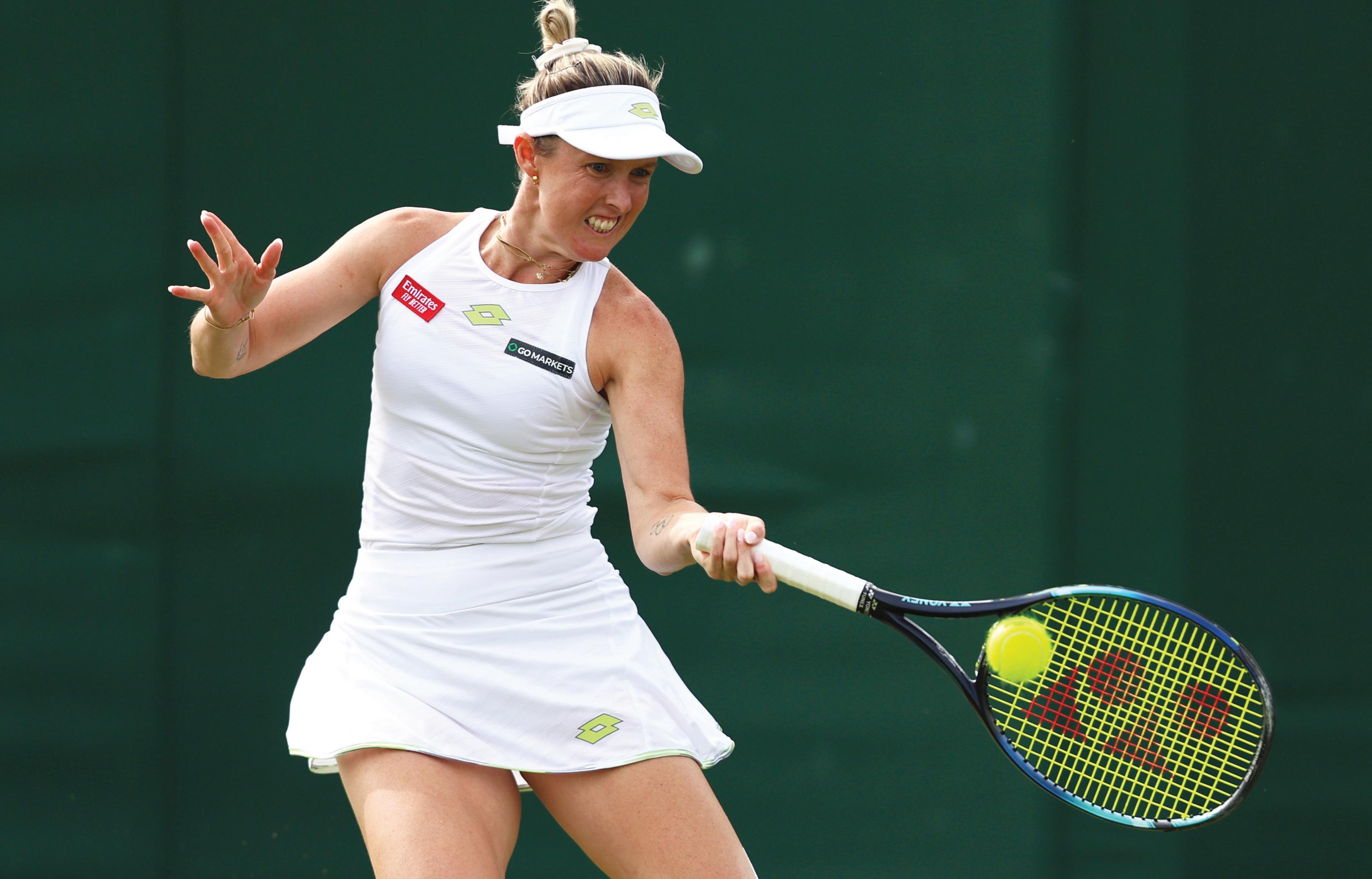
Australian players traditionally produce outstanding performances at Wimbledon –and this year proved no exception.
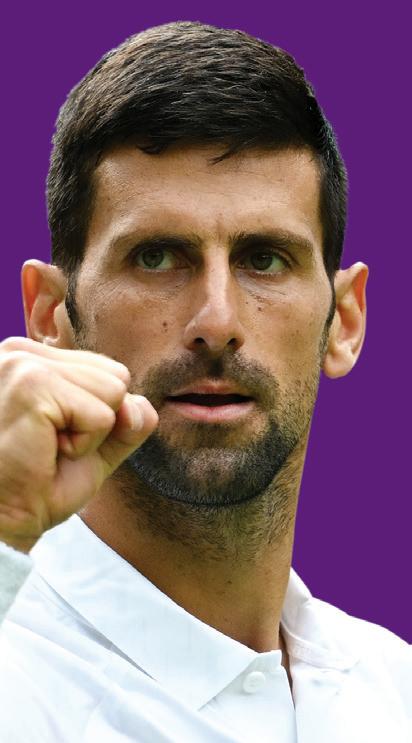
34
REGULARS 6 FIRST SERVE 7 FAN ZONE 10 SPOTLIGHT 11 ONE TO WATCH 12 TOP TEN 26 COURTING CONVERSATIONS 61 YOUR GAME 74 AUSSIE WATCH 76 SCOREBOARD 78 RANKINGS 80 KIDS’ CLUB 82 LAST WORD
INCREDIBLE HISTORY
Fans witnessed the dawn of an exciting new era at Wimbledon.
For the first time in 20 years, a player outside the sport’s revered ‘Big Four’ claimed the men’s singles title at the All England Club. Roger Federer, Rafael Nadal, Novak Djokovic and Andy Murray have dominated at the tournament for the past two decades – but that stranglehold was sensationally snapped by Carlos Alcaraz.
The all-conquering 20-year-old Spaniard was, mind-blowingly, only eight years old when Djokovic won his maiden Wimbledon crown.

Despite their 16-year age gap, the third largest recorded in a Grand Slam men’s singles final in the Open era, they delivered a memorable finale.
Alcaraz triumphed in a five-set battle that lasted almost five hours, to deny Djokovic an Open era-record 24th major singles title.
It was only the second five-set Grand Slam final loss – and first in
almost 11 years – of the Serbian’s storied career.
With his Wimbledon breakthrough, Alcaraz also ended the longest winning streak ever recorded at the All England Club’s Centre Court. Djokovic, incredibly, had not lost on the world’s most famous court since 2013.
“It’s something that I will never forget, that’s for sure,” Alcaraz beamed after scoring his first Grand Slam match win against Djokovic.
“It’s great for the new generation as well, I think, to see me beating him and making them think that they are capable to do it as well.”
Marketa Vondrousova also proved no challenge is impossible, becoming the first unseeded player to win a Wimbledon women’s singles title.
The 24-year-old Czech eliminated five seeded players, as well as the resurgent Elina Svitolina in the semifinals, during her surprise titlewinning run.
Vondrousova, who entered the tournament ranked No.42 and with only four career tourlevel grass-court match wins, described her own against-theodds triumph as “unbelievable”. History was rewritten in more unimaginable ways too during a magical fortnight at the All England Club.
Brit Neal Skupski returned to world No.1 in doubles after achieving a 97-year first at the tournament (see page 27 for more), while Dutchwoman Diede de Groot secured a remarkable 12th consecutive Grand Slam women’s wheelchair singles title.
Australian players produced outstanding results as well.
Storm Hunter became the first Australian in 10 years to advance to a Wimbledon women’s doubles final, while Matt Ebden achieved a 19-year first by reaching back-to-back men’s doubles semifinals.
Such results serve as a reminder that a place in history is only ever temporary and even the seemingly most untouchable
records are, in fact, attainable.
In the aftermath of his Wimbledon loss, a resolute Djokovic vowed his motivation to continue chasing records was stronger than ever.
The 36-year-old is even readily anticipating another Grand Slam showdown with world No.1 Alcaraz in coming months.
“I hope we get to play (at the) US Open,” Djokovic declared. “I think it’s good for the sport, No.1 and No.2 in the world facing each other in almost a five-hours, fiveset thriller. Couldn’t be better for our sport in general, so why not?”
That is why it’s important to celebrate history, as we do in this edition of Australian Tennis Magazine. You never know exactly when – or how – the course of history can change. And aren’t we lucky to watch as record-breaking superstars continually elevate the stakes, and the standard, of the professional game.
Leigh Rogers Associate Editor
FIRST SERVE
6 AUSTRALIAN TENNIS MAGAZINE
TENNIS COURT HIRE
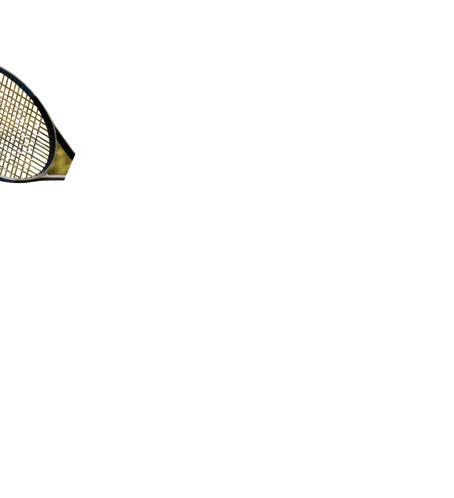
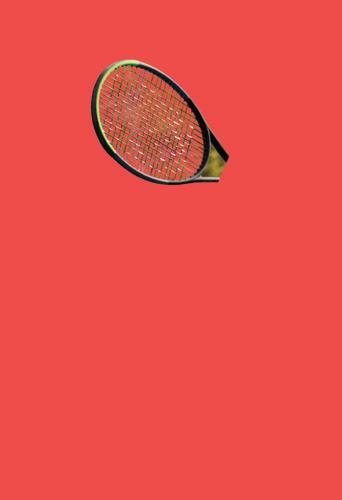

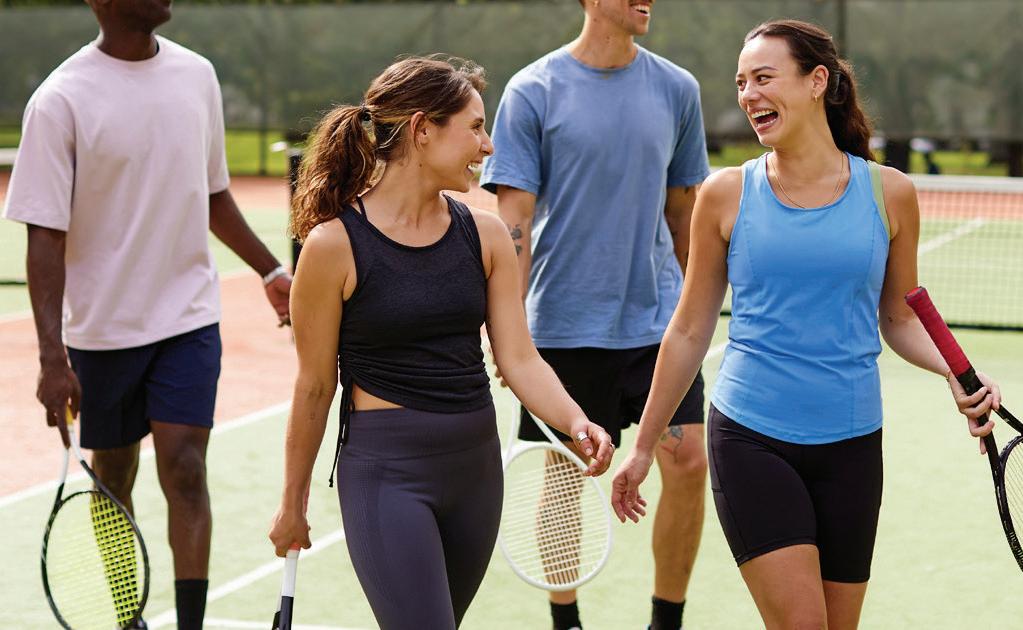
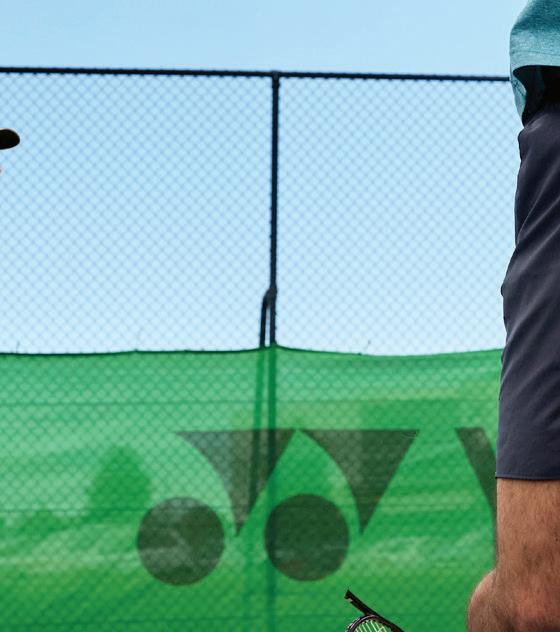











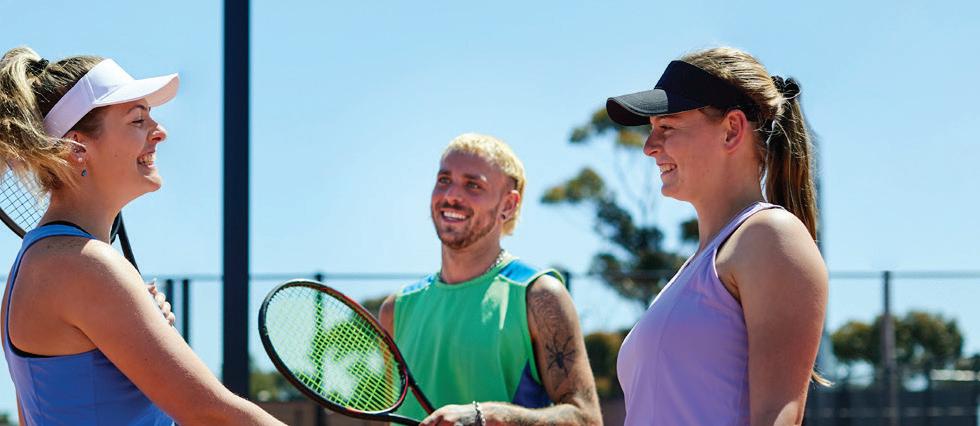
NO MEMBERSHIP, NO WORRIES


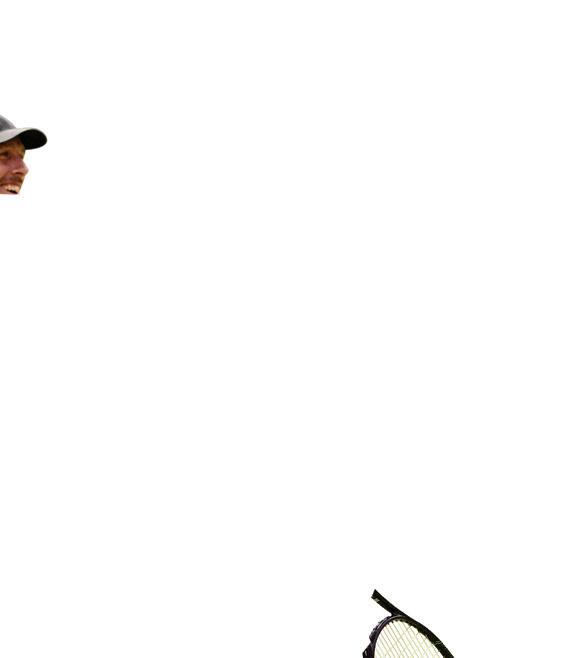
WIMBLEDON 2023
ALCARAZ
JOINS THE
Greats
A new era dawned as Carlos Alcaraz, still just 20 and contesting only his fourth grass-court tournament, defeated Novak Djokovic in an all-time classic final to become a Wimbledon champion.
By VIVIENNE CHRISTIE
To become a great, you must beat a great. It’s a common mantra as the next generation set their sights on the most elite prizes in professional tennis. And yet, only a select few had shown it was possible in an era where Roger Federer, Rafael Nadal, Novak Djokovic and Andy Murray had dominated at Grand Slams across multiple decades.
In the 78 majors contested since Federer claimed the first of a record eight Wimbledon titles in 2003, only nine men outside that elite group had lifted Grand Slam trophies. The dominance was especially pronounced at the All England Club, where it had been more than 20 years since anyone other than a ‘Big Four’ player had celebrated a Wimbledon singles triumph. And one man especially monopolised the 2023

conversation. At age 36, Djokovic launched an 18th main-draw campaign at The Championships not merely as a seven-time champion but as the four-time defending champion. The Serb hadn’t lost a completed match at Wimbledon since 2016, his last loss of any kind at the tournament occurring through an injury retirement in 2017. His Centre Court record was even more astonishing, Djokovic last surrendering a match on that court in 2013.
A NEW ERA: Carlos Alcaraz, now a two-time major champion, halted Novak Djokovic's long-held reign at the All England Club.
As Djokovic extended his win streak at Wimbledon to 34 matches with an uncomplicated march to the 2023 final, there was no disputing the long-held view collective view – it was going to take someone truly extraordinary to beat him.
 Enter Carlos Alcaraz.
Enter Carlos Alcaraz.
At age 20, the Spaniard is 16 years junior to his prolific rival and completing only his third season on tour. But within that period, Alcaraz has already amassed some eye-popping accomplishments: a first Grand Slam trophy (at the 2022 US Open), a rise to world No.1 and titles secured on every surface. But after a memorable fortnight at SW19 culminated in a glorious four hours and 42 minutes of simply magical tennis, Alcaraz celebrated his biggest milestone yet. With a 1-6 7-6(6) 6-1 3-6 6-4 victory over Djokovic in a mesmerising final, he not only claimed a long-coveted Wimbledon trophy but heralded a new era in men’s tennis.
“It's a dream come true for me, being a Wimbledon champion,
something that I really wanted. Honestly, I didn't expect to get it really soon,” beamed Alcaraz, who became the youngest Wimbledon champion since Boris Becker in 1986. “Beating Novak at his best, in this stage, making history, being the guy to beat him after 10 years unbeaten on that court, is amazing for me.”
Most amazing, perhaps, was Alcaraz’s ability to convert some hard-gained lessons into rapid progress. Only weeks before, he was so overwhelmed in the Roland Garros semifinal against Djokovic that he was riddled with cramps and barely able to compete beyond the first set.
Their Wimbledon final showed signs of being a similar fizzer as the first set dissolved in a flurry of Alcaraz errors, an authoritative Djokovic taking only 35 minutes to secure a 6-1 lead. But as he absorbed the enormity of the occasion – played before a Centre Court crowd that included the Prince and Princess of Wales, their children Prince George and Princess Charlotte, as well as King Felipe V1 of Spain – Alcaraz rapidly reassessed. "After the first set I thought, ‘Carlos, increase the level. Everyone would be disappointed’," he said.


With that, a winning mindset came into focus for the 20-yearold. A first blow for Djokovic was an exchange of service breaks early in the second set, marking only the fourth time the Serb’s serve was broken in 107 games at the tournament. Djokovic had also won his last 15 tiebreaks at Grand Slams, a run that Alcaraz halted as he saved a set point to secure the second set.
Momentum now in hand, the Spaniard gained an early break in the third set and another in a 26-minute fifth game. Featuring 13 deuces, Alcaraz converted on his seventh break point to complete the biggest turning point of the match. While Djokovic claimed the fourth set, his energy seemed depleted as the final set began.
Alcaraz, by contrast, was electrified, with a backhand winner securing another early break of serve. The Spaniard’s spectacular shot-making was complemented by remarkable
CARLOS ALCARAZ
AUSTRALIAN TENNIS MAGAZINE 15
“Making history that I did today, it's the happiest moment of my life.”

MARKETA VONDROUSOVA
18 AUSTRALIAN TENNIS MAGAZINE
“It was the most impossible Grand Slam for me to win ... it's crazy.”
DREAM /mpossible
On the eve of the 129th staging of the Wimbledon women’s tournament, a fascinating new club had formed. well.”

The top three had become the Big Three, and its membership was elite. Sharing the past five Grand Slam victories between them, Iga Swiatek, Aryna Sabalenka and Elena Rybakina had also created captivating rivalries as they faced off for other big titles throughout 2023. “It's really cool to be one of those great players,” said world No.2 Sabalenka, understated but clearly proud. “Hopefully I can continue doing well.”
As those Grand Slam superstars launched their respective Wimbledon 2023 campaigns on the All England Club’s iconic main courts, Marketa Vondrousova was happy to simply arrive on lesser-profile Court No.7.
The previous year, the unseeded Czech had been relegated to tourist and supporter of her best friend, Miriam Kolodziejova, in qualifying, her left wrist still in a cast as she recovered from a second surgery.
WIMBLEDON 2023
The 24-year-old’s appearance in the Roland Garros 2019 final was a distant memory for many observers and most considered Vondrousova more a hard or clay-court threat. The world No.42 had, after all, won only four main-draw matches on grass before then.
But as she edged past some dangerous opponents in the early rounds, something
MAJOR LEAP: With Wimbledon glory, Marketa Vondrousova also celebrated her
opponents – two of them in three sets. “These two weeks are incredible. I just came here, and I just said to myself, ‘Just stay open-minded, just try to play your game’,” she commented after victory over world No.4 Jessica Pegula in the quarterfinals. “Now this is happening, so it's a crazy thing … I’m just a bit in shock.” As it transpired, Vondrousova was also in form, the Czech taking only 75 minutes to progress past the resurgent Elina Svitolina in the semifinals. “Here on grass, it was almost impossible,” she said of her return to a Grand Slam final. “I didn't play many matches on grass before. My best (Wimbledon performance) was (reaching the) second round … for me, when it was clay or hard (court), maybe I would say, ‘yeah, maybe it's possible’. But grass was impossible for me.”
Yet the biggest surprise was still to come as the crafty lefthander faced Ons Jabeur in the championship match. Contested under a closed roof, due to patchy rain and a rare yellow warning for high winds in southwest London, Vondrousova created a storm of her own as she staged a recovery in both sets – trailing 2-4 in the first, and 1-3 in the second – to record a 6-4 6-4 win.
Later, she would speak of the remarkable calm that became as much a factor as her trademark creativity on court. “I didn't start the final well,” Vondrousova admitted. “But I was so calm. I felt really good. On match point I couldn't breathe. Crazy nervous. I was thinking to myself, ‘Just be over’. Everything is on you. Then – just relief.”
“Nobody would have said that I even have a chance to win … I can’t believe it still.”
As reality gradually set in for the new champion, so too did the awareness of her new status in the sport. As the third Czech, after Jana Novotna and Petra Kvitova, to lift the Venus Rosewater Dish, Vondrousova also debuted in the world’s top 10.

From outside the world’s top 40 and pre-Wimbledon conversations, Marketa Vondrousova proved nothing is impossible as she became the first unseeded player ever to lift the Venus Rosewater Dish. VIVIENNE CHRISTIE reports
THE AUSTRALIAN TENNIS MAGAZINE 19
AUSSIES AT WIMBLEDON SHINE
Storm Hunter’s Wimbledon campaign began at Roehampton, where she successfully navigated through three qualifying rounds.

The 28-year-old Australian did not drop a set to earn her place in the singles main draw for the rst time.
Hunter’s inspired qualifying run included a second-round upset of top seed, world No.68 Elina Avanesyan. It was her career- rst top-100 singles win on grass.
“I don’t think I can really put it into words,” Hunter said after qualifying. “It’s just really, really special.”

Hunter then enjoyed a careerbest run in the women's doubles competition, reaching the nal alongside Belgium’s Elise Mertens.
The third seeds conceded a total of nine games, and did not lose serve, in a dominant march into the title match.
Hunter became the 13th Australian to advance to a Wimbledon women's doubles nal in the Open era and the rst to achieve this feat in 10 years.
It took resurgent veterans Barbora Strycova and Hsieh Suwei to end Hunter and Mertens’ title quest in a high-quality nal.
Despite the loss, Hunter was grateful for the opportunity to compete on the tournament’s nal day and on the biggest stage.
“For me, it’s a dream come true to play here on Centre Court in the doubles nal,” she said.

DOUBLES MILESTONES




















Matt Ebden became the rst Australian in 19 years to progress to back-to-back Wimbledon men’s doubles semi nals.


The 35-year-old from Perth and Indian partner Rohan Bopanna proved clutch under pressure, saving a match point in their opening round and then a further three match points in a thirdround victory.


Top seeds and eventual champions Wesley Koolhof and Neal Skupski nally ended their winning run.
That semi nal loss snapped a 10-match winning streak for Ebden at the tournament, following his title-winning run
last year alongside compatriot Max Purcell.
Koolhof and Skupski also spoiled Purcell’s title defence, eliminating him and Australian partner Jordan Thompson in the third round.
With John Peers and Brazilian partner Marcelo Melo also
reaching the third round, it marked the rst time in 12 years that three teams featuring Australians had progressed to that stage in a Wimbledon men’s doubles draw.



Ebden proudly led the Australian charge in the Wimbledon mixed doubles competition too, reaching the quarter nals alongside compatriot Ellen Perez.
The fifth-seeded pair saved two match points in their second-round victory.
This meant Ebden saved a total of six match points across three separate wins during the tournament.
















Ebden’s e orts see him rise to a career-high world No.10 in the ATP Tour doubles rankings.
PERSEVERANCE REWARDED
The quiet-achieving Chris O’Connell was the best performing Australian in the men’s singles competition.
The 29-year-old, who had never previously won a main-draw match at the All England Club,

Australian players traditionally produce outstanding performances at Wimbledon – and this year proved no exception.
WIMBLEDON
By LEIGH ROGERS
24 AUSTRALIAN TENNIS MAGAZINE
advanced to the third round.
“Of course, I’m pretty proud. Third round is awesome,” O’Connell said.
A year ago, O’Connell made a considered decision to forego Wimbledon qualifying and compete at ATP Challenger events in Portugal and Spain instead. His goal was to earn enough ranking points to break into the world’s top 100.
A er his e orts at Wimbledon this year, O’Connell now sits at a career-high world No.67.

“This time last year, getting to the top 100 was a huge goal of mine,” he said. “So, to be sitting here a year later, looking at top 50, that’s awesome.”
His rise is even more remarkable considering he was unranked in early 2019 and struggling to earn money while injured.

“All the odd jobs I’ve worked at,” O’Connell re ected. “Boat cleaning, working in a clothes shop, tennis coaching, delivering yers … I think back on those, and I’m like, ‘Wow, now I’m here!’”
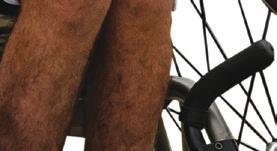
MAJOR BREAKTHROUGH
Heath Davidson advanced to his rst Grand Slam singles nal in the quad wheelchair competition.


Although the 36-year-old Australian proved no match for world No.1 Niels Vink in the nal, Davidson was thrilled with a career-best performance in his 13th Grand Slam appearance.
“Honestly, I thought I played pretty well,” a gracious Davidson said following his loss to 20-yearold Vink, who tallied 28 winners in a 6-1 6-2 victory.

“I could have thrown the kitchen sink at this kid today and he would have hit it past me for a winner.”
Davidson’s highlight came in the semifinals, where he
snapped an 11-match losing streak against defending champion Sam Schroder. It was his first win against the world No.2 since July 2019.
Davidson was also a nalist in the quad wheelchair doubles competition alongside Canadian Robert Shaw. It was their second runners-up nish at a Grand Slam tournament this season.
“They’re No.1 and No.2 in the world for a reason,” Davidson conceded following a straightsets loss to Vink and Schroder in the final.
“Me and Robbie are just going to keep doing what we do and hopefully we sneak one in eventually.”

BRIGHT FUTURES
For the rst time in 15 years, multiple Australians advanced to the third round in the Wimbledon girls’ singles competition.


Taylah Preston, a 17-year-old from Perth, and Emerson Jones, a 15-year-old from the Gold Coast, proved they are ones to watch with career-best Grand Slam showings.
Preston has been focusing on building her professional ranking this season and peaked at world No.414 in June, however decided to return to junior level to compete at Wimbledon.

“Wimbledon is Wimbledon,” Preston explained. “It is an amazing tournament and the highest tournament you can play in tennis.”
Jones, who was competing at Wimbledon for the rst time, is the highest-ranked 2008-born player in the junior rankings at world No.18.

 AUSSIE STARS: Chris O'Connell, Emerson Jones, Taylah Preston and Storm Hunter all enjoyed career-best runs at Wimbledon.
AUSSIE STARS: Chris O'Connell, Emerson Jones, Taylah Preston and Storm Hunter all enjoyed career-best runs at Wimbledon.
AUSTRALIAN TENNIS MAGAZINE 25
MAJOR PROGRESS: A first Grand Slam singles final appearance was a Wimbledon highlight for Heath Davidson.
HISTORY WRITING his own
Novak Djokovic has won more Grand Slam singles titles than any other male player in history. He is also the longest-reigning world No.1 in the sport.
Twenty years into his professional playing career, the Serbian superstar is showing no signs of slowing down either.
At Wimbledon, he became just the third player in history to record 350 Grand Slam singles wins. Only Roger Federer (369) and Serena Williams (365) have won more.
But when it comes to winning percentage at Grand Slam level, Djokovic (on 88 per cent) has both of their measures.
So, has the 36-year-old’s growing list of phenomenal records nally answered the ageold question of exactly who is the G.O.A.T (greatest of all time)?
“When you talk about history, people mostly talk about the Grand Slams won or the amount of time you spent at No.1 in the rankings,” Djokovic said.
“I have managed to break the records in both of these statistics, which is amazing.”
Many believe Djokovic’s unmatched achievements are in fact debate-ending. Yet he refuses to subscribe to that notion.
“I don't want to say that I am
the greatest, because I feel it's disrespectful towards all the great champions in di erent eras of our sport, that was played in a completely di erent way than it is played today,” Djokovic said.
“I feel like each great champion of his own generation has le a huge mark, a legacy, and paved the way for us to be able to play this sport on such a great stage worldwide.
“So, I leave those kinds of discussions of who is the greatest to someone else.”
NOVAK’S LEGACY
An insatiable appetite to defy the odds has long fuelled Djokovic’s dreams.

From growing up in a wartorn country with little tennis tradition, to overcoming some of the sport’s greatest champions. Djokovic has proven anything is possible.
His fearlessness to dream big, he explains, was a quality his parents encouraged from a young age.
“My family was on a very low budget. But my parents still decided to support me in my dream, which was to become a professional tennis player and hopefully win Wimbledon and be No.1 in the world,” Djokovic related.
“You know, 95-plus per cent of people would be laughing at
them, were laughing at them, and were discouraging them to spend whatever is le over from the family budget into such an expensive sport.
“Coming from a country that had almost no tennis tradition, it was extremely challenging and the chances of me succeeding were very slim.”
Djokovic describes his mother, Dijana, as “a rock”.
“She’s an incredible woman that kept our family together in the toughest moments,” Djokovic said.
He labels his father, Srdjan, as the “driving force of the family”.
“He has instilled in me such power of belief and positive thinking into achieving goals, that it’s beyond anybody that I have ever met,” Djokovic said.
“No one played tennis in my family, so he had to ask people who were experts, who were knowledgeable in the field to know whether I have potential and whether he should invest money or not.”
Djokovic also credits his late mentor and
LEGEND GROWS:
At age 36, Novak Djokovic remains determined to build on an unparalleled tennis legacy.
childhood coach Jelena Gencic for “shaping my mind as a human being, but also as a professional”.
“I was only seven, eight years old, and she had me watching these tapes of all the best players, both male and female at that time. I had to know exactly why a certain shot is hit at a certain time on a certain surface, etcetera, from a very young age,” Djokovic said.
FEATURE
As Novak Djokovic builds on astonishing records, a deep respect for history and the opportunity to create his own is providing major motivation.
By LEIGH ROGERS
30 AUSTRALIAN TENNIS MAGAZINE
“So, she was treating me very maturely, and she thought that it's never too early to start with this kind of mindset and development.”
STATE OF MIND
Djokovic’s mental toughness has arguably been his greatest asset across a record-breaking career.
He is the only man in the Open era to twice save match points in a Grand Slam singles titlewinning run. His fortitude has also helped him ght through injury setbacks, like at this year’s Australian Open when he managed to win the tournament with a torn hamstring.
“He just locks in and makes you have to play either ridiculously well to win the points, or he steps up with a winner himself. He knows how and when to step up. He's smart,” Casper Ruud bemoaned a er losing to Djokovic in this year’s Roland Garros nal.
“It's annoying for me, but it's very, very impressive.”
Stefanos Tsitsipas, who has lost to Djokovic in both of his Grand Slam nal appearances, agrees.
“Novak is a player that pushes you to your limits,” he said. “This is very good for the sport, to have competitors like him, to have champions like him.
“He has made me a much better player. He has made my

NOVAK DJOKOVIC
“I still feel hungry for success.”
AUSTRALIAN TENNIS MAGAZINE 31
OF RANKINGS YEARS








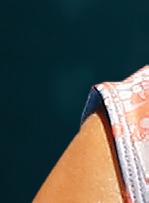
















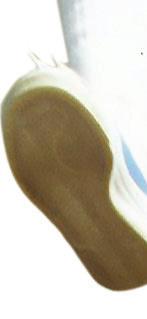




















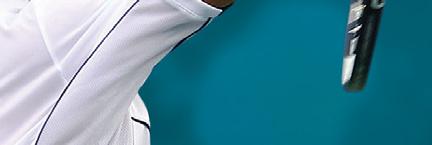

Impactful, controversial, history-making and heartbreaking, computer rankings have ruled the game since their inception in the men's game in 1973.
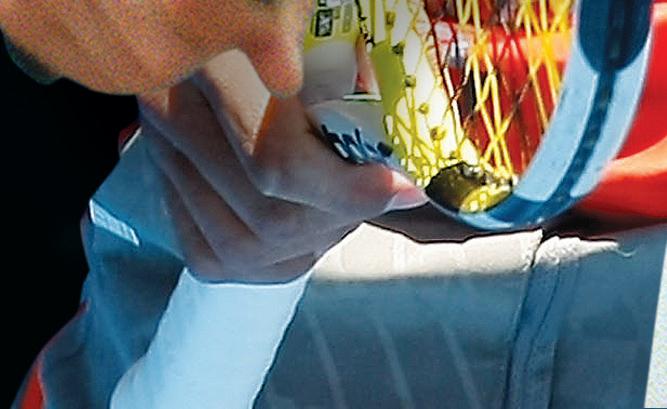












 By SUZI PETKOVSKI
By SUZI PETKOVSKI


FEATURE
34 AUSTRALIAN TENNIS MAGAZINE
August 2023 marks 50 years since computer rankings.
Romanian Ilie Nastase made history as the rst No.1, atop the inaugural ATP list of 23 August 1973. Ironically, the showman known as ‘Nasty’ wasn’t a fan of the newfangled o cial pecking order, believing the cold, hard numbers and pursuit of higher rungs had a chilling e ect on player relations.

“I didn’t really have much time to enjoy my top ranking when I had it, because everybody wanted to take it away from me,” Nastase re ected 40 years later, of his 40 weeks at the top.
It’s a refrain from many former No.1s. Enjoyment of the feat is greater in retrospect, partly because the prestige of being numero uno has grown immeasurably over the decades.
Nothing has impacted the game more than computerised rankings, with the arguable exception of tennis going professional in 1968. It’s no exaggeration to say rankings rule the game, and the lives of players. Rankings determine which tournaments players enter, whether they are seeded, or whether they steel themselves for the rigours of qualifying. Aspiring pros literally go to the ends of the earth in pursuit of a precious ranking point.





RANKINGS BEFORE RANKINGS





Given the modern obsession with computer rankings, it’s hard to overstate what a groundbreaker the system was in its day. Even the concept of an official No.1 didn’t exist prior to computer rankings.
Year-end subjective rankings lists, compiled by tennis writers, broadcasters, ex-players and national associations, named their season No.1s and top 10s. But there was no consensus. Creation of computer rankings allowed the players to de ne No.1 as a new universal measure of greatness, alongside the majors.

The ATP itself was uncertain of how ‘official No.1’ would be accepted. Fans were accustomed to hailing Grand Slam champions as the game’s

greats; for many, the Wimbledon winner was de facto world champion. How meaningful was a No.1 ranking in April or August? And players on the computer could ascend to No.1 anywhere. Nastase’s historic feat came in the off-Broadway locale of South Orange, New Jersey. The top ranking could even fall to a player without taking the court – via the loss of a rival in a faraway event.
The game took some time to warm to computer rankings. The rolling, 52-week report card on the players wasn’t as thrilling or convincing as a stadium-shaking Grand Slam victory. Newspapers, magazines and other pundits continued to issue their annual rankings lists. The International Tennis Federation still names its o cial world champions, giving more weight to majors; its 2022 men’s No.1 was Novak Djokovic, not top-ranked Carlos Alcaraz.
But the No.1 ranking has emerged as one of the ultimate prizes in tennis, an end in itself rather than a byproduct of a Grand Slam title. The pursuit of No.1, once almost an a erthought, is the overarching narrative in the game.
FROM SNAIL MAIL TO LIVE RANKINGS








No one had any inkling in the freewheeling 1970s that computer rankings would become so ubiquitous and in uential. Tennis was ahead of the curve – golf didn’t produce o cial world rankings for men until 1986 and unbelievably for women not until 2006. But the ranking system in those pioneering days was far from a slick operation.
Doubles rankings didn’t arrive until 1976, women’s rankings were inaugurated in 1975 and ATP rankings weren’t issued weekly until 1979. In the early years, they were published at irregular intervals, sometimes six weeks apart.

The ATP didn’t even own the computer that produced the rankings. In the mid-70s, ATP employees would take the reams of player statistics to a nearby Los Angeles aerospace company, to run through their mainframe. The rankings would be delivered



AUSTRALIAN TENNIS MAGAZINE 35
HIT YOUR WAY TO FIT CARDIO TENNIS

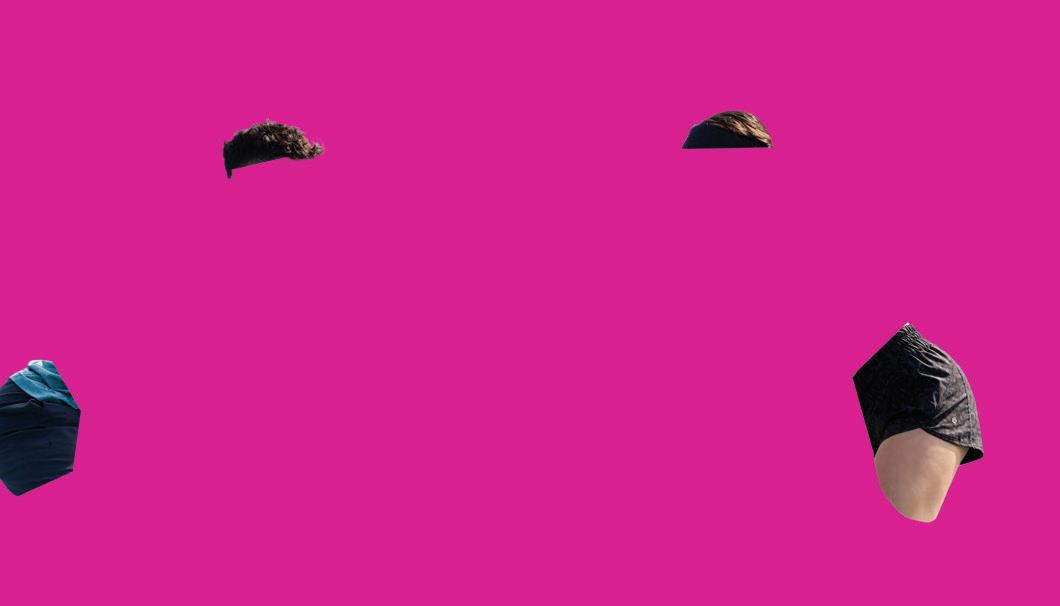




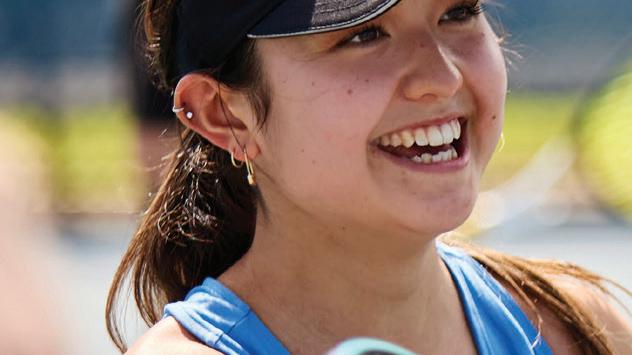





BRAZILIAN Brave







After years of struggles, Beatriz Haddad Maia is finally showing the world her capabilities and shining on the Grand Slam stage.
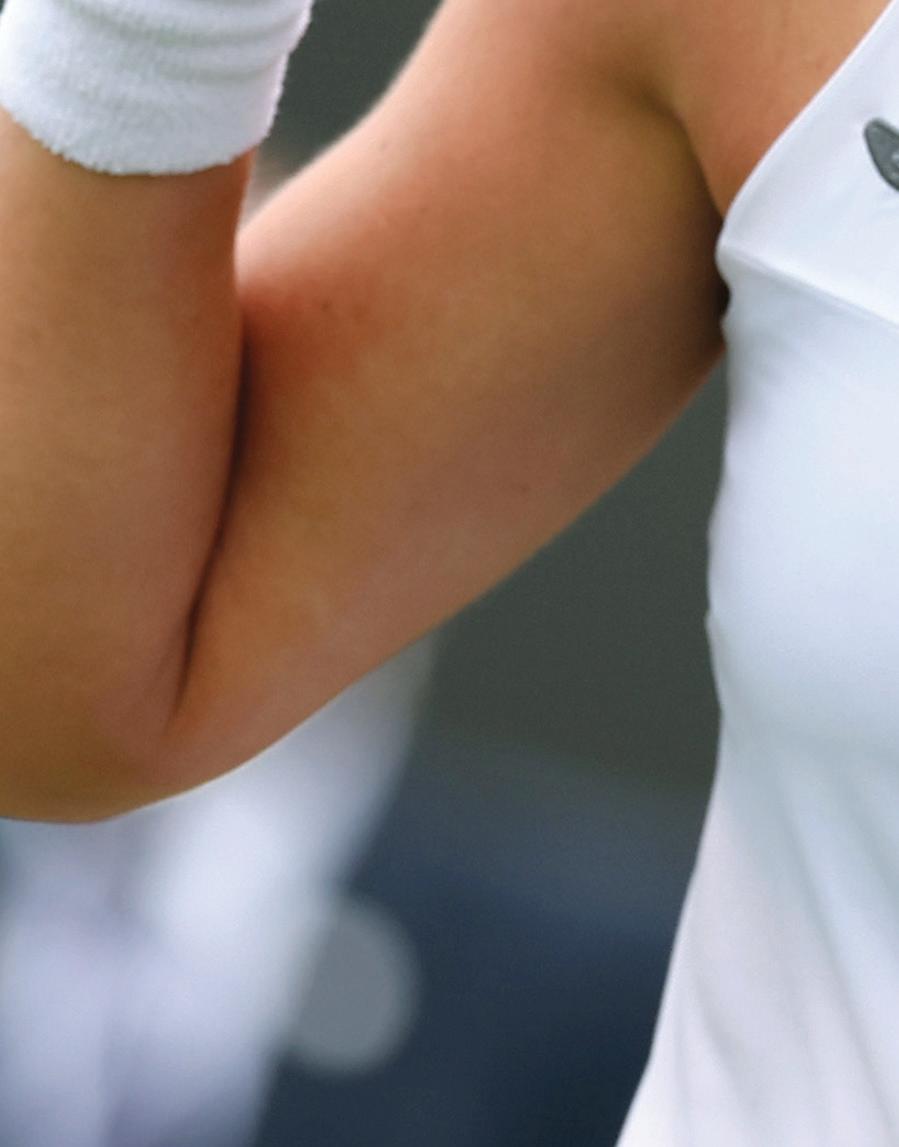
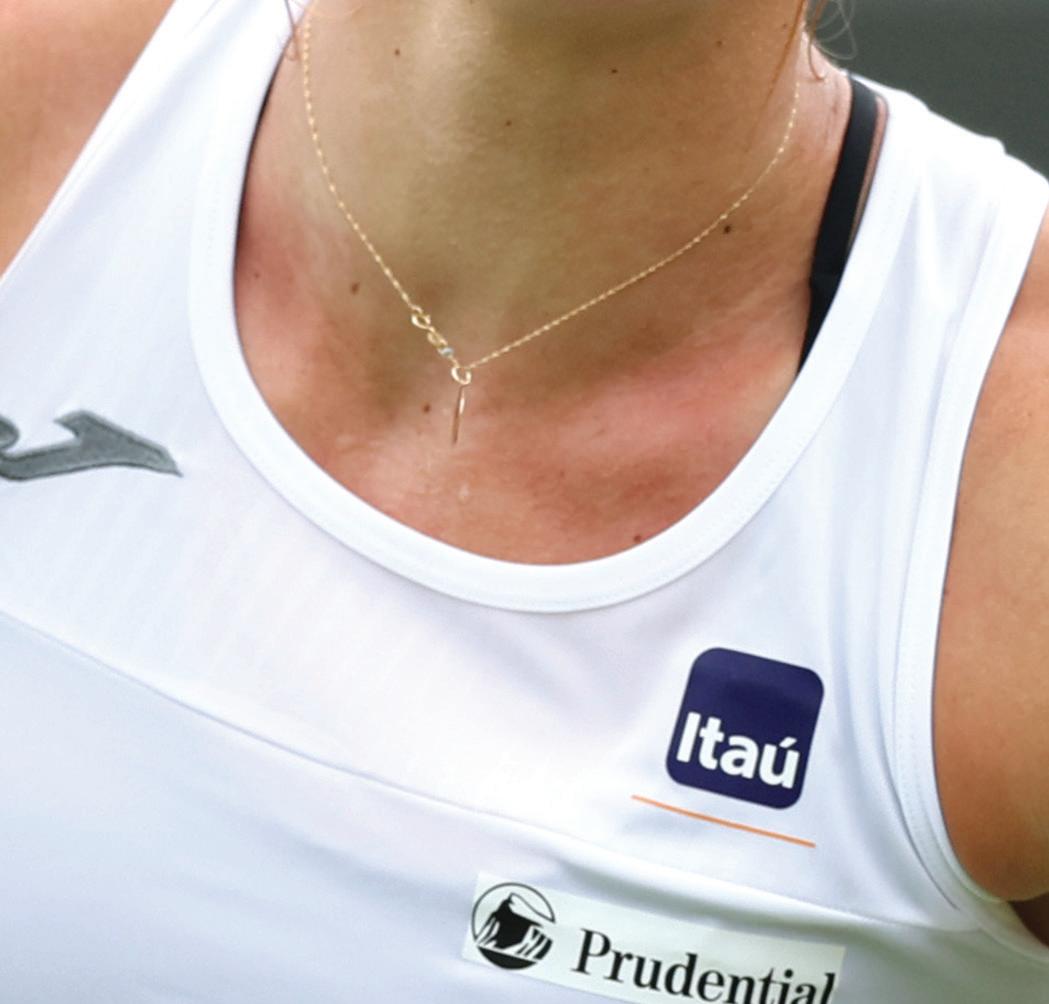
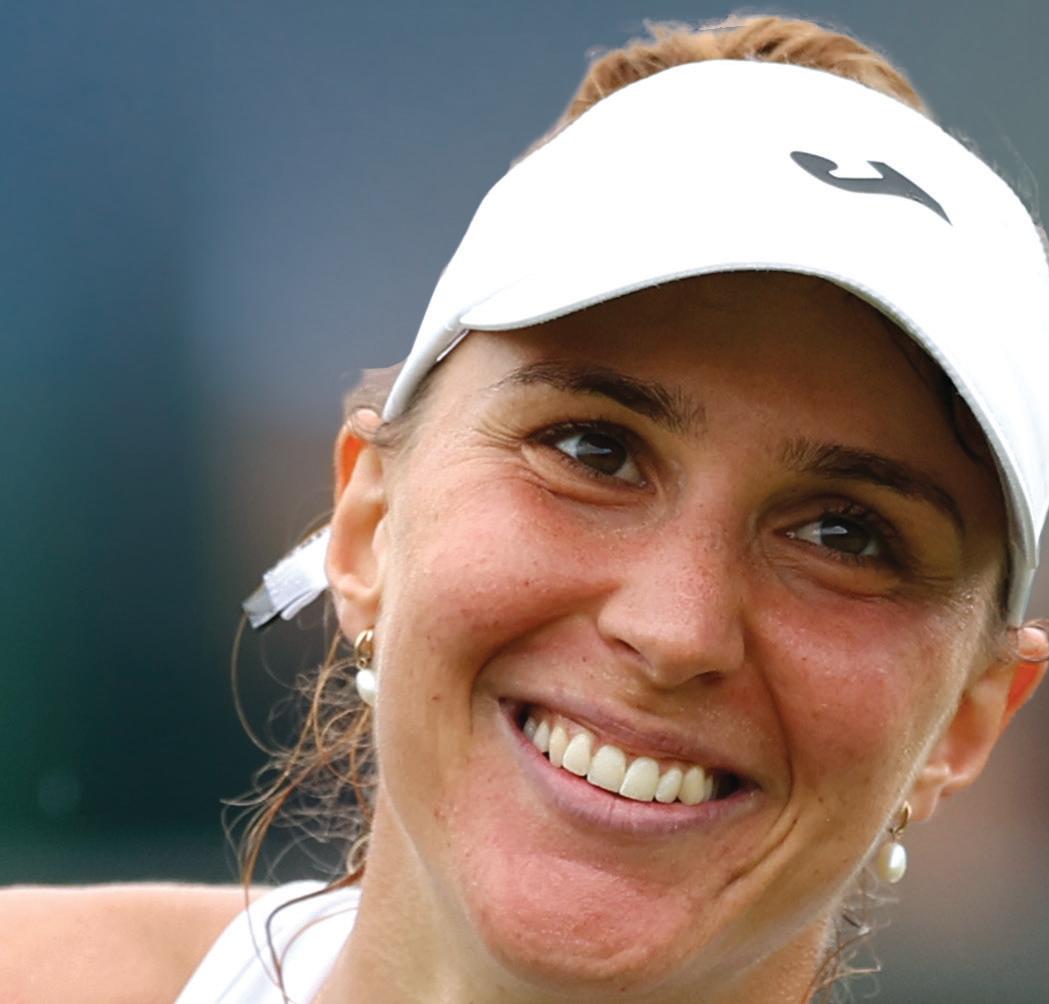
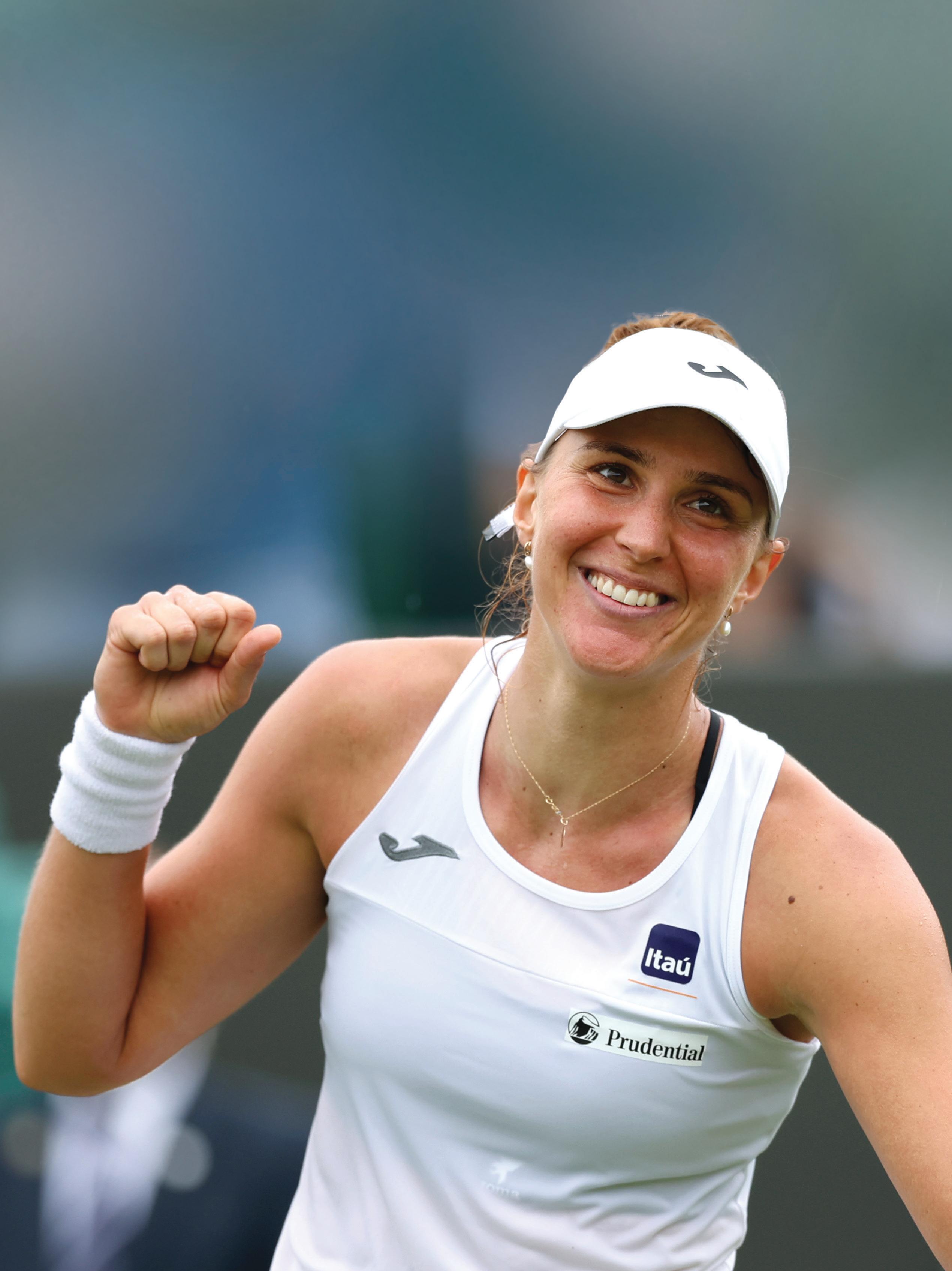 By
By
shining
MATT TROLLOPE
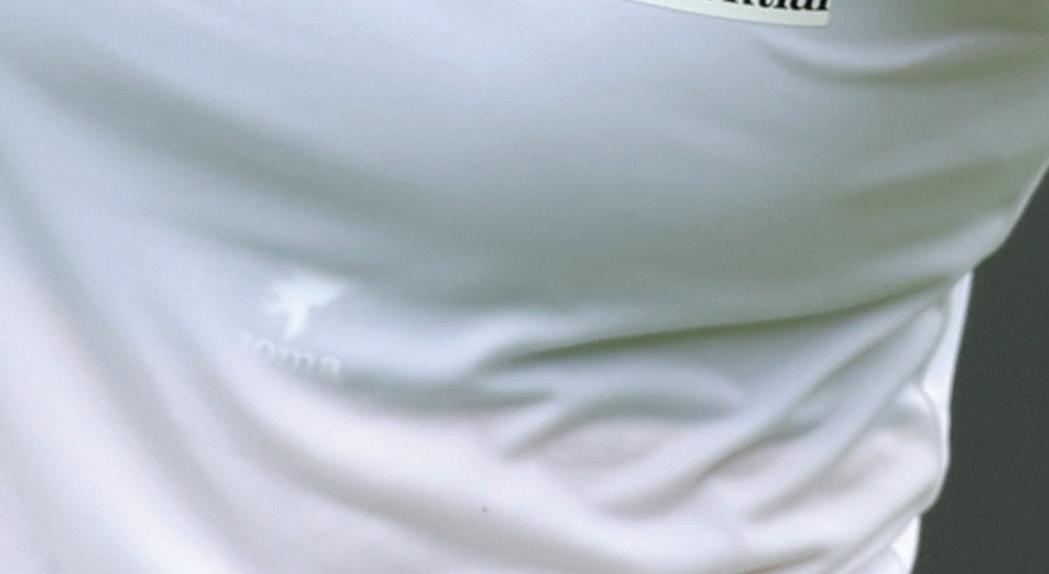

FEATURE
AUSTRALIAN TENNIS MAGAZINE 45
LOOKING


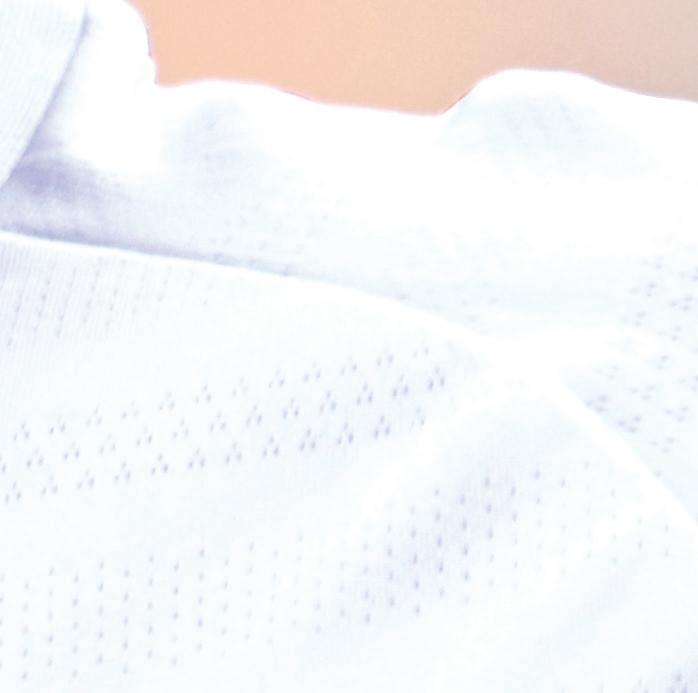

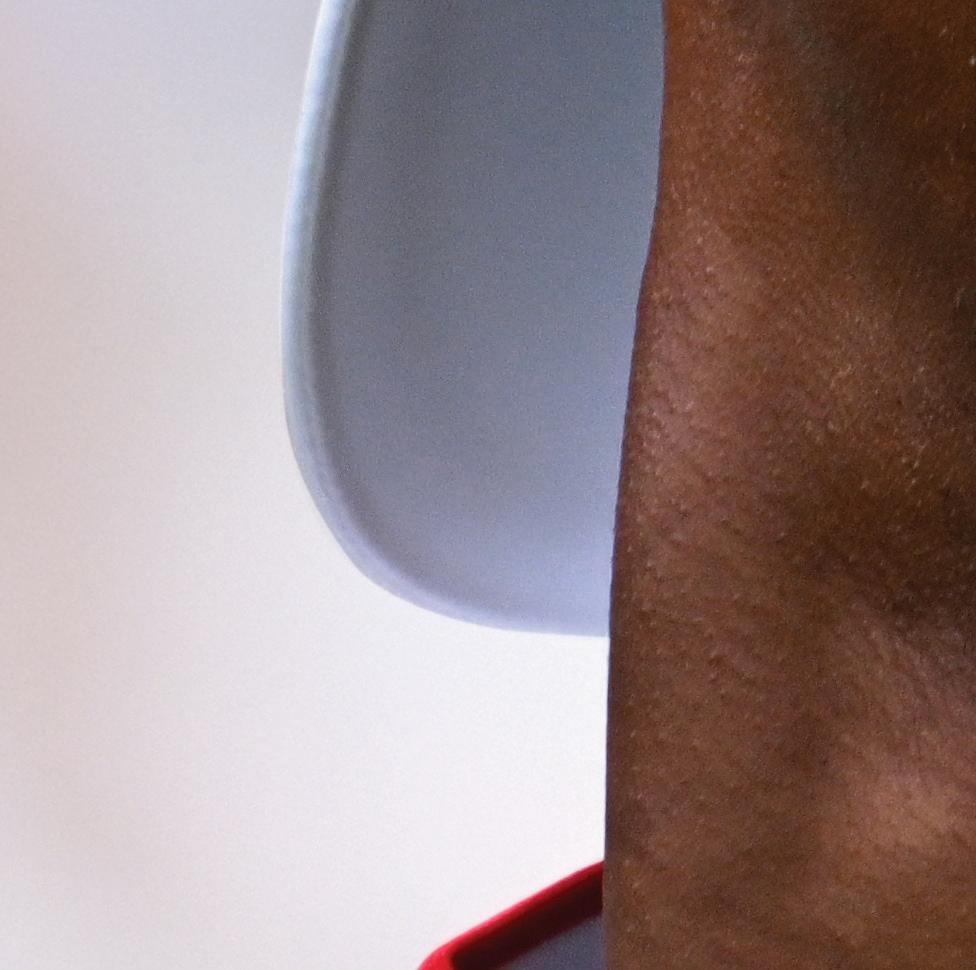

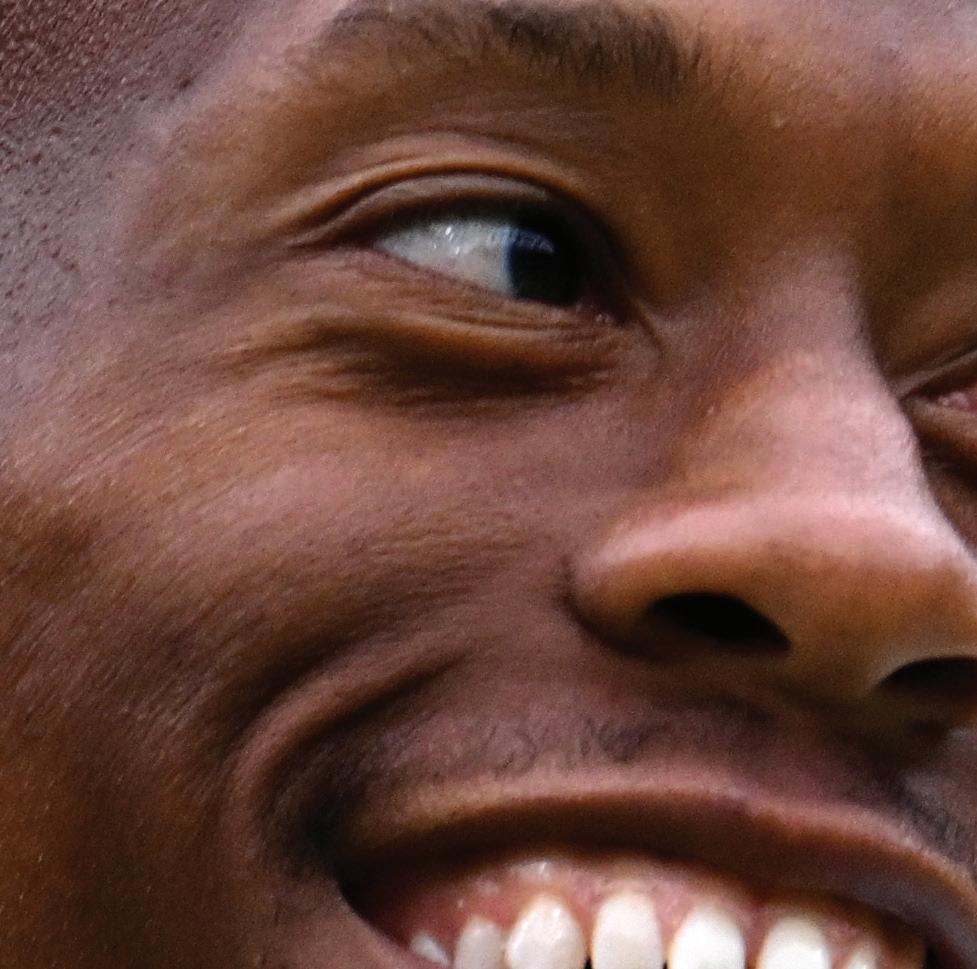




LOOKING BACK , POWERING FORWARD
As Christopher Eubanks took inspiration from tennis history, he also reset his own career trajectory. Armed with a career-high ranking and heartening perspective, he’s now embracing a brighter future in the sport.
Many players take a keen interest in tennis history as they plot their rise on the professional tour. Few, however, have the chance to develop such rich insights as Christopher Eubanks.
In 2021, the Atlanta-born-andbased Eubanks portrayed the late Arthur Ashe in the Citizen Ashe documentary, providing the opportunity to learn more about the late American’s rise to become a three-time Grand Slam singles champion.
“It was really, really cool. It was an experience not just doing film … but also having to do the research that I did, having to go back and watch old film to try to get the technique down,” reflected Eubanks, who similarly valued the lessons absorbed about Ashe’s profound off-court influence.



“Also watching tonnes of interviews of him just to try to learn his demeanour, his perspective on things, his philosophy,

how important education was. So many di erent things that it challenged me. But it was also super, super rewarding when I got to see the nal project.”
Eubanks’ own history became a talking point at Wimbledon, where he made his long-awaited main-draw debut at age 27 a er four unsuccessful qualifying campaigns. With wins over 2022 semi nalist Cameron Norrie and No.5 seed Stefanos Tsitsipas, the contrast couldn’t have been more pronounced in his electrifying charge to the 2023 quarter nals, where he exited to No.3 seed Daniil Medvedev in ve thrilling sets.
“Everything from realising that I have two credentials at Wimbledon for the rest of my life, to checking my phone and seeing my name as an ESPN alert, to realising how much I disliked grass at the beginning of the grass-court season, to now look at where I am,” he said of the life-changing result.
Still, it wasn’t the rst time the American had learned the value of persistence. In fact, it wasn’t even the most important one, with a despondent Eubanks almost quitting the sport completely as he struggled to gain traction when the tennis tours resumed a er the pandemic.

“I had a real sit-down with my agent in





2021 and I said, ‘Listen, if I’m still 200 by next year and injuries haven’t played a part, I can do something else with my time’,” said Eubanks, who subsequently lost in the second round of Australian Open 2022 qualifying. “It’s not that glamorous if you’re ranked around 200.”
And it wasn’t as if the charismatic Eubanks lacked options. With a business degree almost completed as he pursued

looking forward to continuing, no matter what my ranking is.”
For now, that ranking provides a powerful platform, Eubanks peaking at world No.31 after Wimbledon. Should that hold until the US Open, he will be seeded in a fifth main-draw campaign at his home Grand Slam – a dizzying rise given he started the season ranked No.123. Reaching the Miami quarterfinals provided a top-
the college tennis pathway at Georgia Tech, he’d developed a broader skillset. A commentary role with Tennis Channel became a welcome side gig – and came with the silver lining that it also enhanced his tennis.
“Now I think doing the commentary has kind of helped my game in a sense,” said Eubanks at the All England Club, explaining how it helped him develop a more analytical mindset in reading patterns of play. “It’s something that I’m
100 breakthrough and on the eve of The Championships, Eubanks leapt into the world’s top 50 after winning a maiden ATP title in Mallorca.
It helped that the popular Eubanks, the son of father Mark (a Baptist minister) and mother Carla, had established some handy tennis connections. He credits former ATP player Donald Young as a driving in uence in pursuing professional tennis, with Jarmere Jenkins (a long-time hitting
FEATURE
VIVIENNE CHRISTIE reports
CHRISTOPHER EUBANKS
“I’m probably having the most fun I’ve ever had playing tennis.”
AUSTRALIAN TENNIS MAGAZINE 49
CHRISTOPHER EUBANKS

52 AUSTRALIAN TENNIS MAGAZINE
RAPID RISE: Holger Rune has quickly established himself as a top-10 star.
Holger Rune does not shy from a challenge, as his extraordinary record against topranked opponents highlights.
The 20-year-old Dane won seven of his first eight matches against top-five players. This feat has been achieved just once before on the ATP Tour and not for nearly five decades.
Romanian Ille Nastase, a former world No.1 and two-time major singles champion, is the only other man to enjoy such early success against the game’s elite.
“I play some of my best tennis when I play the top guys of the world,” Rune acknowledged in Rome, after notching a seventh consecutive top-five win.
“I mean, it’s a good time to play your best tennis because you need it against those players. I’ve managed to do it many times now.”
When Rune celebrated his 20th birthday in late April, he had tallied 11 top-10 victories so far in his career.
In comparison, Novak Djokovic, the ATP Tour’s record-holder for most top-10 wins, had six at the same age. Roger Federer, Rune’s childhood idol, had nine.
Rune demonstrated his fearlessness against the world’s best in Paris late last year, where he defeated five consecutive top-10 players to claim his maiden ATP Masters 1000 title.
No man had previously achieved this feat at a tour-level tournament, outside of the prestigious season-ending ATP Finals.
“It’s kind of a small dream come true,” said Rune, who rose from outside the world’s top 100 to finish the 2022 season at world No.11. “(But) I have bigger dreams.”
The ambitious Rune’s high expectations are no secret.
“I want to win a Grand Slam this year,” he declared in January.
“To be able to be No. 1 in the world you need to be able to win Grand Slams.”
A fourth-round run at the Australian Open and a quarterfinal appearance at Roland Garros helped Rune consolidate his place as a top-10 star. His ranking peaked at world No.6 in May, making him the highest male Danish singles player in history.
Rune enjoyed a career-best run at Wimbledon too, reaching the quarterfinals.
Although Rune was awarded the peer-voted ATP Newcomer
of the Year award in 2022, he is proving a divisive personality on tour.
The former top-ranked junior has been labelled by some as the new ‘bad boy’ of the sport.
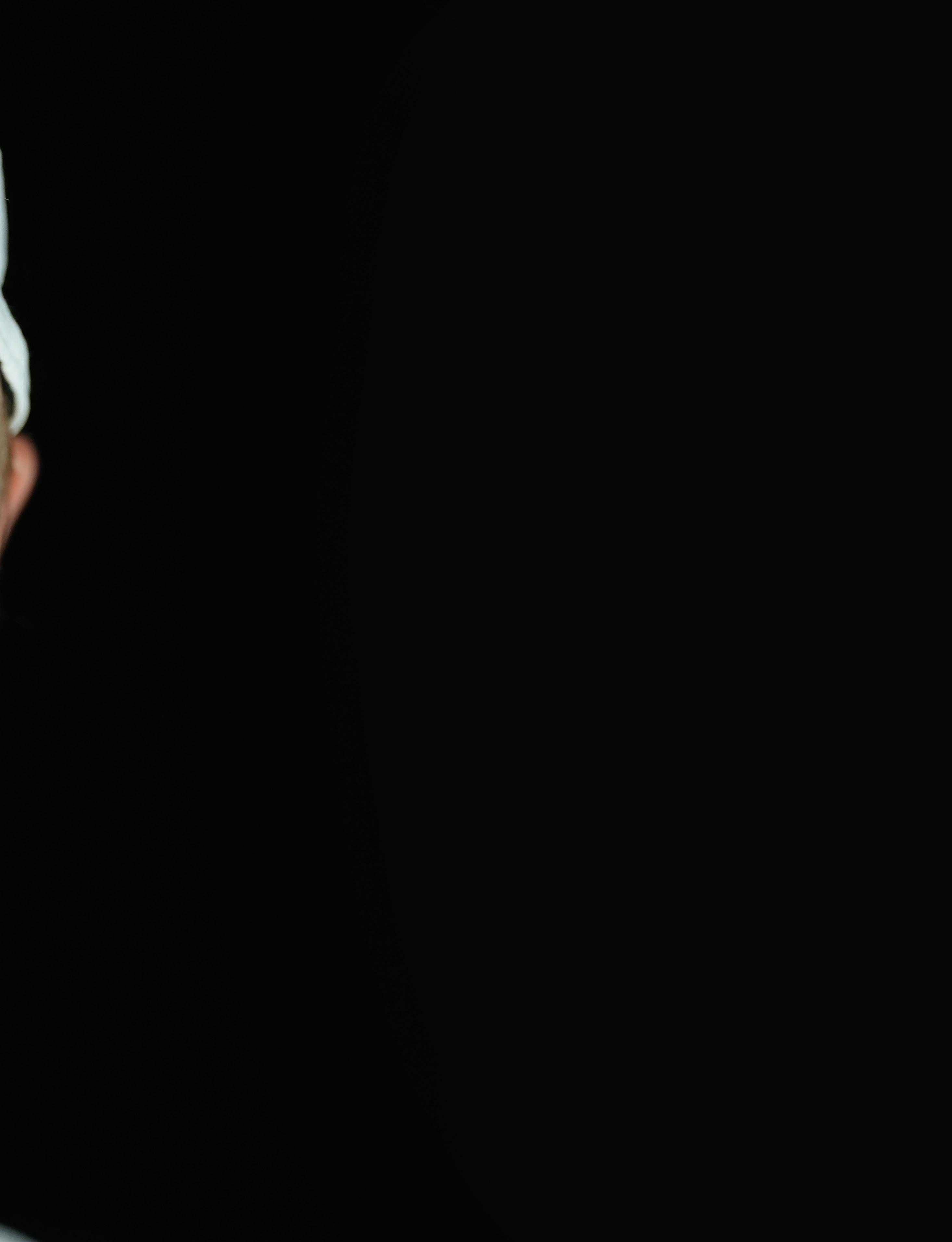
“I don’t see myself as the bad boy at all,” Rune refuted. “I mean, I play with a lot of passion and energy when I’m on the court. I think many players do that. I don't know why that should be a bad boy thing, to play with energy on the court.”
His emotional on-court outbursts have irked several competitors, including fellow Scandinavian Casper Ruud and three-time major champion Stan Wawrinka.
“I didn’t send him a Christmas postcard and neither did he to me,” Ruud commented on their frosty relationship earlier this season. “I’m not sure we can say we’re too close.”
Rune can, at times, have a tumultuous relationship with crowds too. Not that he minds.
“I think it’s normal in life that some people love you and some people don’t,” he said.
“Everybody has different preferences of characters and players, and I respect that. That’s fine.
“If (crowds) are for me, it’s great. I just try to put on a fight every
HOLGER RUNE FAST FACTS
BORN: 29 April 2003, Gentofte, Denmark
LIVES: Monte Carlo, Monaco
HEIGHT: 188 cm
STARTED PLAYING: Age six
CURRENT ATP RANKING: No.6
CAREER-HIGH ATP SINGLES
RANKING: No.6 (May 2023)
ATP TITLES: 4 singles
CAREER PRIZE MONEY: $5,903,377
DID YOU KNOW? Holger names his mother, Aneke, and lifelong coach, Lars Christensen, as his biggest inspirations.
At 23 July 2023
time I step out there on the court. Do my best to win the match. Stay focused. I feel like to do everything I can to win the match is more important than what’s happening outside the court.”
Rune has earned the respect of Australia’s Nick Kyrgios, who believes he is “an exciting talent, super good guy as well”.
“He’s one of the best talents that we have in the sport. He’s got the ability to win multiple Grand Slams,” Kyrgios commented at this year’s Australian Open.
FEATURE
Brilliant yet brash, Holger Rune can be a divisive personality; but as he amasses feats not seen on the men’s tour for more than five decades, he’s making his presence felt. By LEIGH ROGERS
AUSTRALIAN TENNIS MAGAZINE 53
LEARN TENNIS FOR LIFE



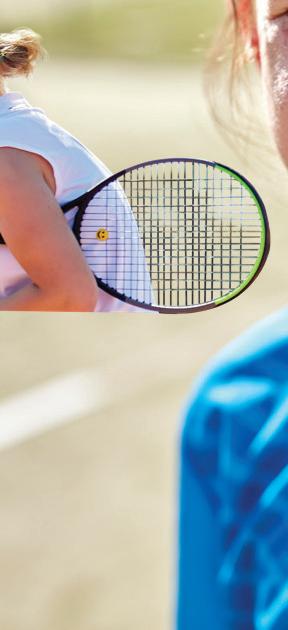




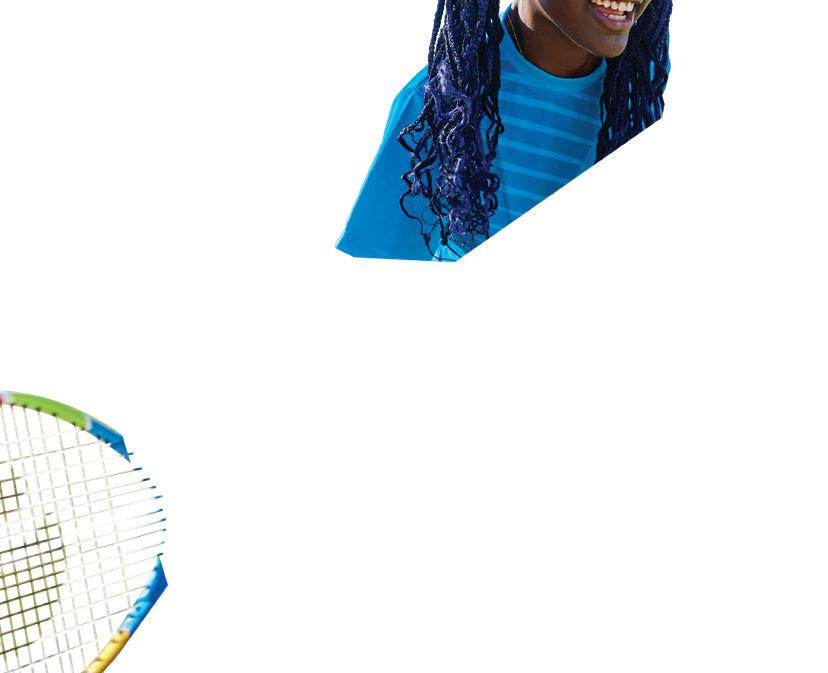


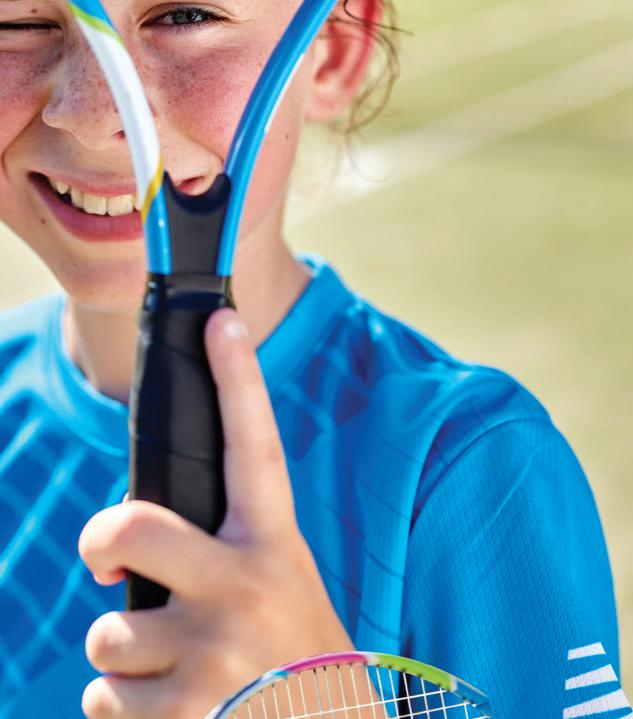
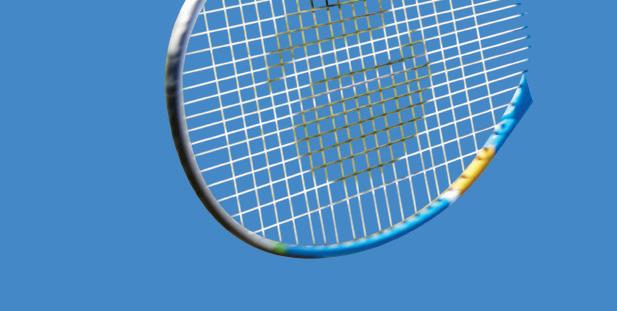



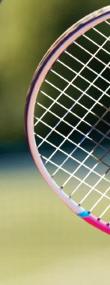

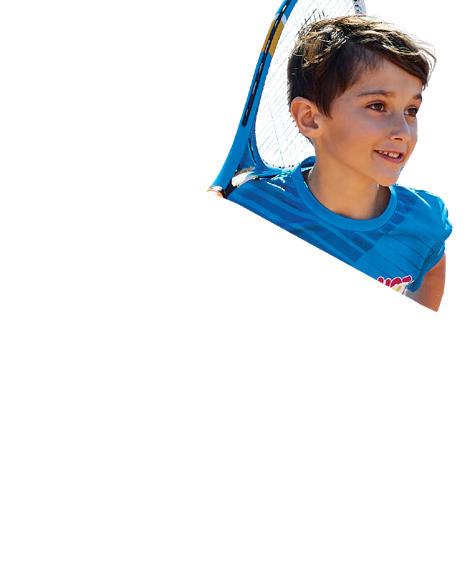

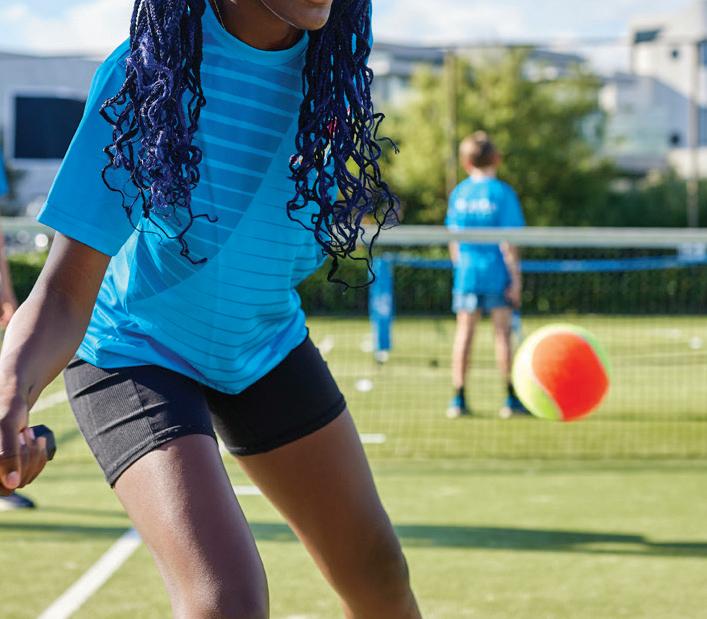
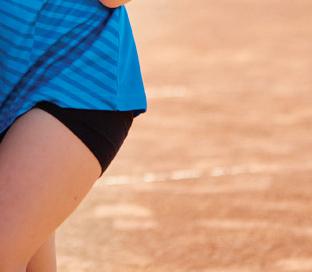
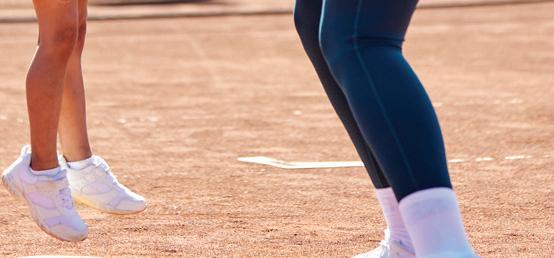


YOURGAME

GAME




Boost your on-court performance
62 SETTING STRONG EXAMPLES
As the world’s best players chased Grand Slam glory at Wimbledon, many diff erent and valuable lessons were served up.
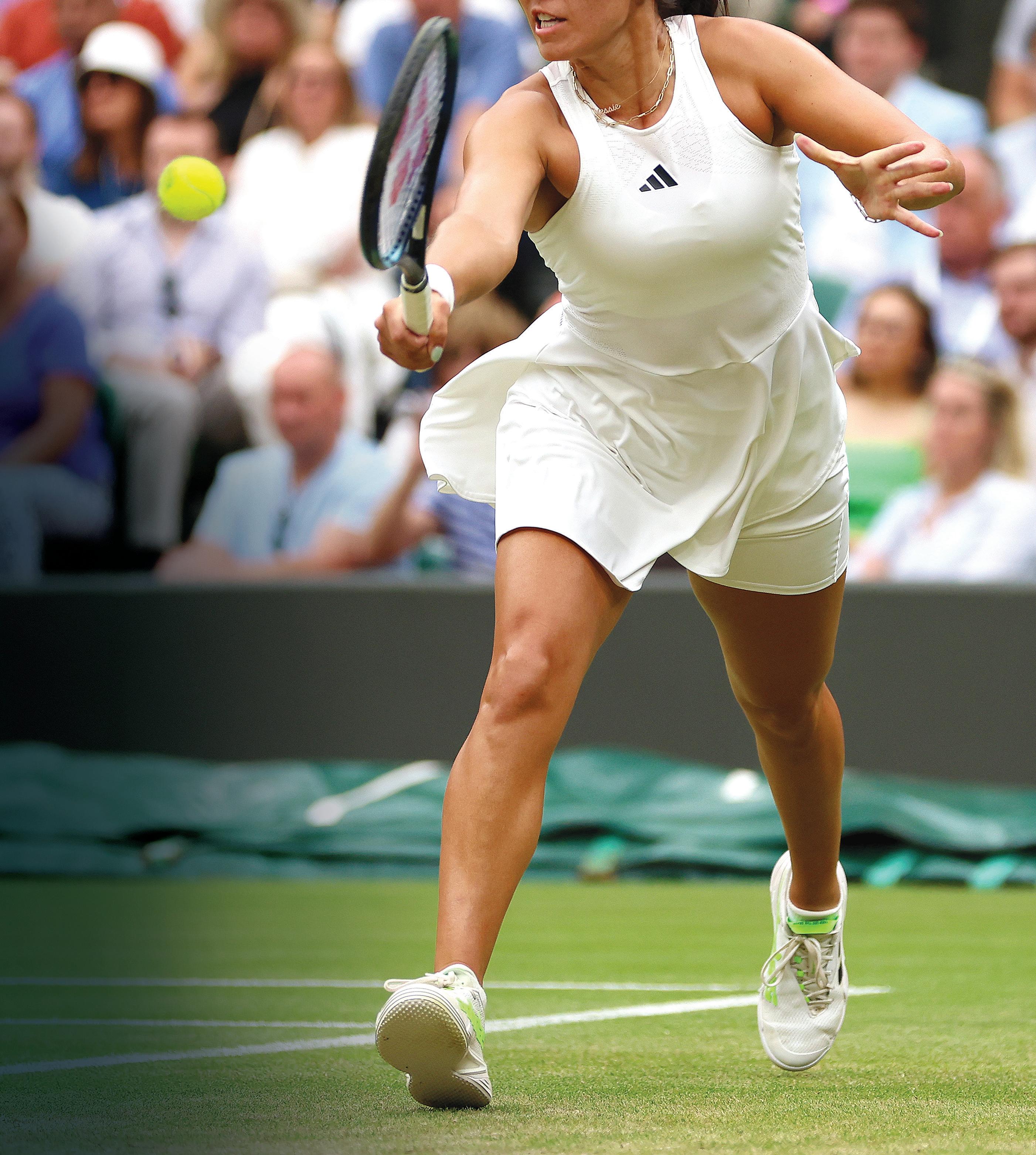
64 DON’T DASH BACK
Australian Daria Saville, who recently returned to tour from an ACL injury, reveals why patience is the key to recovering from a long-term setback.
66 STROKE MASTER
We explore why Karolina Muchova’s forehand is one of the most efficient, simple and effective groundstrokes in the women’s game.
67 ACING THE WARM-UP
The right pre-match preparation, which includes both physical and mental elements, can help improve your on-court performance.
AUSTRALIAN TENNIS MAGAZINE 61
NEW GROUND: A steely focus helped Jessica Pegula advance to her first singles quarterfinal at Wimbledon. The world No.4 has now made the final eight at all four majors.






















































































































 Enter Carlos Alcaraz.
Enter Carlos Alcaraz.





























































 AUSSIE STARS: Chris O'Connell, Emerson Jones, Taylah Preston and Storm Hunter all enjoyed career-best runs at Wimbledon.
AUSSIE STARS: Chris O'Connell, Emerson Jones, Taylah Preston and Storm Hunter all enjoyed career-best runs at Wimbledon.





























































 By SUZI PETKOVSKI
By SUZI PETKOVSKI











































 By
By




















































